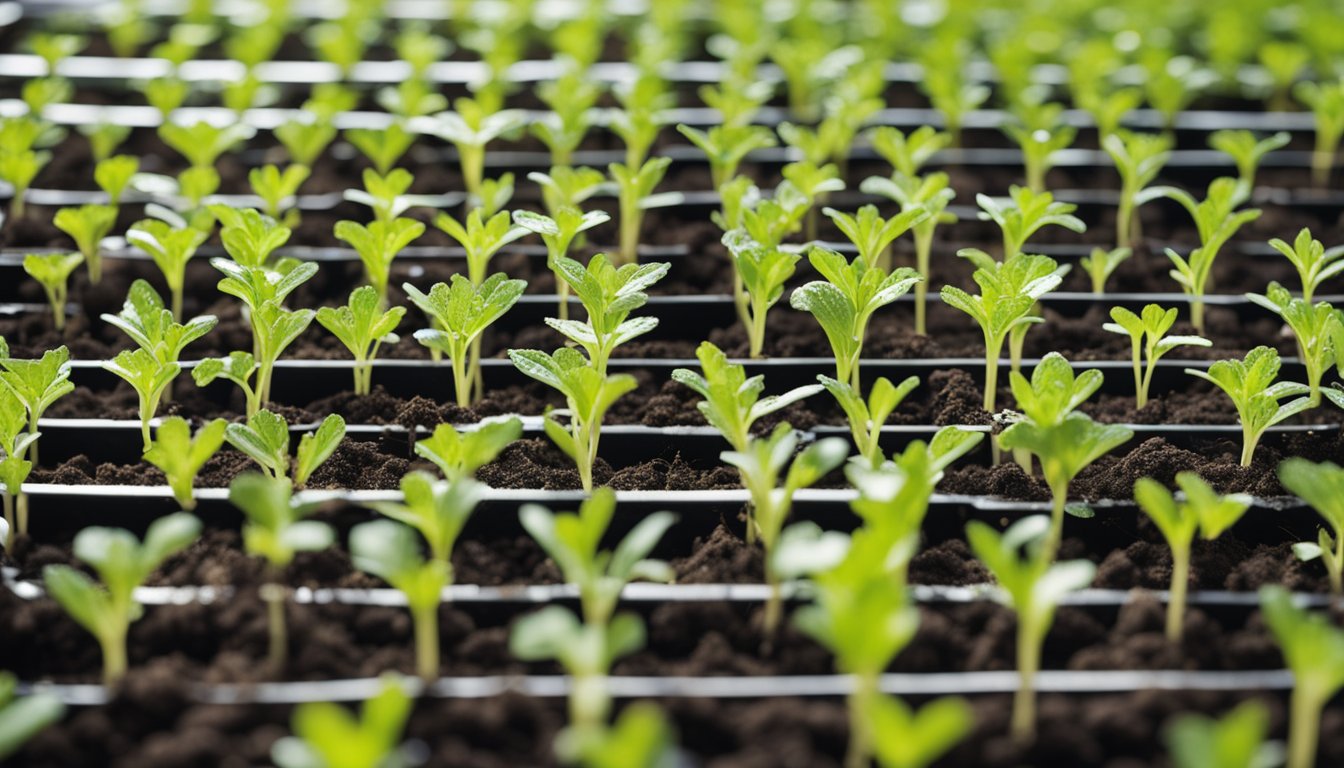Growing your own carrots from seed is one of the most rewarding experiences a gardener can have. There’s something magical about nurturing tiny seeds into vibrant, crunchy vegetables that you can enjoy straight from your garden. Plus, homegrown carrots taste far better than store-bought ones, bursting with flavor and nutrients.
Understanding Carrot Seeds
Carrot seeds are tiny powerhouses. Each seed holds the potential for a vibrant orange root. The seeds typically measure about 1/16 inch long. Their small size makes them easy to overlook, but they pack a punch in flavor.
I’ve found that fresh seeds yield the best results. Seeds over a year old may have reduced germination rates. Storing seeds in a cool, dry place helps maintain their freshness. Seed packets generally provide a use-by date to guide storage.
Selecting the right variety is essential. Options include Nantes, Imperator, and Danvers. Each variety offers a unique taste and texture. Nantes carrots are sweet and crisp. Imperator varieties grow long and slender. Danvers carrots are hearty with a rich flavor.
When planting, spacing is crucial. I like to plant seeds about 1 to 2 inches apart. This distance prevents overcrowding while allowing for proper growth. Lightly covering the seeds with soil keeps them protected and moist.
Watering plays a significant role. Carrots prefer consistently moist soil. I aim for about 1 inch of water per week. Too little water can lead to tough, woody carrots.
Patience pays off. Carrots typically take 70 to 80 days to mature. I often sneak peeks to check progress, but resist the urge to pull too soon. Harvesting at the right time ensures sweet, tender roots.
Choosing the Right Variety

Selecting the right variety of carrots is essential for a successful harvest. Different types offer distinct flavors, textures, and growth characteristics.
Popular Carrot Varieties – How to Grow Carrots from Seed?
Nantes carrots are renowned for their sweetness and smooth texture. These bright orange beauties grow about 6 to 8 inches long and thrive in a variety of soils. Imperator carrots, the classic supermarket type, grow longer and thicker, making them great for juicing or snacking. Danvers carrots are versatile and robust, known for their adaptability in different climates, and they reach around 7 to 8 inches in length. For those who enjoy something unique, purple and yellow carrots add vibrant colors and interesting flavors to the garden.
Preparing the Soil – How to Grow Carrots from Seed?
Good soil sets the stage for strong carrots. My focus here is on the right soil conditions and how to get them ready for planting.
Soil Type and Texture
Carrots prefer loose, well-draining soil. Sandy loam works best, allowing roots to grow deep without obstruction. Compacted or heavy soils can stunt growth, leading to deformed roots. If my soil is too heavy, I mix in compost or sand. These amendments boost drainage and provide nutrients for tasty crops. I often check for small stones, too; they can play a game of hide-and-seek with growing carrots. Well-prepared soil makes for happy roots and better yields.
Planting Carrots

Planting carrots is simple and satisfying. The right timing and method play crucial roles in growing strong, tasty roots.
When to Plant
I find spring the best time to plant carrots. The soil temperature should be around 50°F (10°C) for optimal germination. If you live in a cooler region, you can also start seeds in late summer for a fall harvest. Carrots need about 70 to 80 days to mature, so plan accordingly. Aim for a staggered planting every few weeks. This way, you’ll enjoy fresh carrots throughout the season.
Care and Maintenance – How to Grow Carrots from Seed?
Caring for carrot plants is simple yet rewarding. They thrive with the right attention, and healthy habits yield delicious results.
Watering Requirements
I find watering my carrots crucial for their growth. Aim for consistent moisture, especially during dry spells. Water deeply once or twice a week. This prevents the soil from drying out too much. Carrots are like little sponges, they absorb water readily, leading to sweet, crunchy roots. If your carrots get too dry, they might split or become stunted. A good rule of thumb is to keep the top of the soil moist and the roots happy.
Harvesting Carrots – How to Grow Carrots from Seed?
Harvesting carrots is a rewarding moment in the gardening journey. Plucking those sweet, crunchy roots brings satisfaction and a sense of accomplishment.
Signs of Maturity
I look for specific signs to determine when carrots are ready for harvest. Color is one indication; vibrant orange usually means a carrot’s ripe. Size also matters. I pull a few to gauge their thickness. A mature carrot typically measures about 1 inch in diameter. The greens may also show signs of drooping, suggesting the roots are ready for a taste test. Ensuring I check these signs helps me avoid under or overripe carrots.
Harvesting Methods
When it’s time to harvest, I use gentle methods to avoid damaging the roots. First, I loosen the soil around the carrot with a garden fork. Pressing down gently prevents breakage. Then, I grasp the tops of the greens and pull upward with a steady motion. If the carrots resist, I wiggle them slightly. They should come out easily if they’re ready.
After harvesting, I shake off the excess soil. I store the carrots in a cool place to keep them fresh. Those delicious treats make a fantastic addition to meals and snacks.
Before You Go – How to Grow Carrots from Seed?
Growing carrots from seed has been one of the most fulfilling gardening experiences for me. There’s something incredibly satisfying about nurturing tiny seeds into vibrant, crunchy vegetables. Each step from preparing the soil to harvesting is a labor of love that pays off with fresh flavors and added nutrition.
I’ve found that with the right techniques and a little patience, anyone can cultivate a successful carrot crop. Whether you choose classic orange varieties or experiment with colors like purple and yellow, the rewards are well worth the effort. So grab your seeds and get started, your taste buds will thank you! Don’t forget to add The Herb Prof to your favorites so you don’t miss out on future articles.
References – How to Grow Carrots from Seed?
Little Herb Encyclopedia, by Jack Ritchason; N.D., Woodland Publishing Incorporated, 1995
The Ultimate Healing System, Course Manual, Copyright 1985, Don Lepore
Planetary Herbology, Michael Tierra, C.A., N.D., Lotus Press, 1988
Handbook of Medicinal Herbs, by James A. Duke, Pub. CRP Second Edition 2007
The Complete Medicinal Herbal, by Penelope Ody, Published by Dorling Kindersley
Check the Following Articles
Milk Thistle Supplements for Liver Detox: Top Options
Effective Tips on How to Kill Aphids In Your Garden
Antibiotic Herbs: Boost Your Health Naturally
Calathea Maranta: The Colorful Prayer Plant for Your Home
Frequently Asked Questions – How to Grow Carrots from Seed?
What are the benefits of growing carrots from seed?
Growing carrots from seed allows you to experience the joy of nurturing plants from their earliest stages. Homegrown carrots often taste better and are richer in flavor and nutrients compared to store-bought options. Plus, growing your own allows for variety in color and taste, giving your meals an exciting twist.
What types of carrot varieties are best to grow?
Some popular carrot varieties include Nantes, Imperator, and Danvers. Nantes carrots are sweet and smooth, Imperator varieties are long and great for juicing, while Danvers carrots are robust and versatile, thriving in various climates. Each offers unique flavors and textures.
How should I prepare the soil for growing carrots?
Carrots thrive in loose, well-draining soil, ideally sandy loam. To improve heavy soil, mix in compost or sand to enhance drainage and provide nutrients. Ensure to check for small stones, as they can hinder the growth of the carrot roots.
When is the best time to plant carrot seeds?
Spring is generally the best time to plant carrot seeds when the soil temperature is around 50°F (10°C). In cooler regions, consider late summer planting for a fall harvest. Staggered planting every few weeks helps ensure a continuous supply of fresh carrots.
How often should I water carrot plants?
Carrots require consistent watering, ideally once or twice a week. Deep watering is essential to maintain soil moisture during dry spells. Keeping the soil moist helps avoid issues like splitting or stunted growth, leading to sweet, crunchy roots.
How do I know when to harvest my carrots?
Harvest carrots when they reach the desired size, typically indicated by color and the condition of the greens. Gently loosen the soil with a garden fork and pull the tops steadily to avoid damaging the roots. Proper timing ensures sweet, tender carrots.
How should I store harvested carrots?
After harvesting, store carrots in a cool, dark place to maintain their freshness. Proper storage keeps them crisp and flavorful, making them a fantastic addition to meals and snacks for weeks to come. Avoid exposure to heat and direct sunlight.

